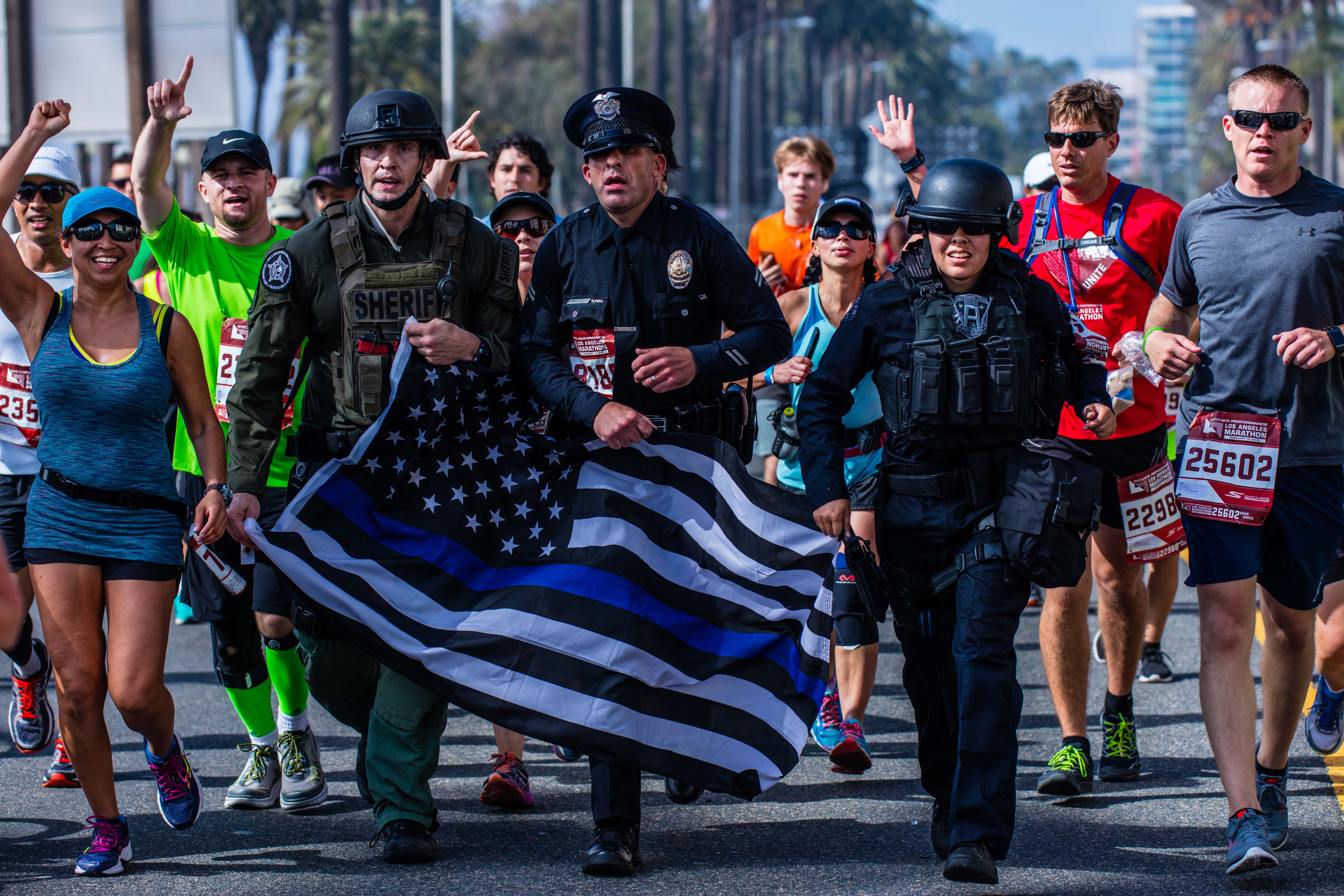The following article by Jack Dunphy was originally posted on PJMedia.com on August 27, 2012, and is reposted here with his permission.
Oh how comforting is the mantle of victimhood, how rosy and flattering is the light that so often shines on those who wear it. And how willing are some to shine that light no matter how tenuous the claim to victimhood may be.
On August 18, Ronald Weekley Jr., a 20-year-old student at Xavier University, was skateboarding outside his home in Venice, Calif., when he was arrested by officers from the Los Angeles Police Department. The term “Venice” may conjure up for you the image of a hip, seaside community, home to movie stars and other celebrities, and indeed there is substance in that image. But there is another side to Venice, one not often seen even by the hipsters who live nearby and patronize the chic restaurants near the beach and on Abbot Kinney Blvd. Mr. Weekley’s arrest took place in the other Venice, the grittier one, near the corner of 6th and Sunset Avenues, about a half-mile from the beach but, with its higher levels of poverty and crime, culturally more akin to South Central Los Angeles than to Venice’s more affluent areas.
Mr. Weekley’s version of events can be summed up thus: He was skateboarding in the street towards his home, and upon reaching his front door he was set upon, completely by surprise and without justification, by four LAPD officers who proceeded to tackle him and beat him to the point that he thought he was “going to die.” The later moments of the Saturday afternoon arrest were captured on a cell phone camera and posted to YouTube, and with the help of some dishonest news reporting, by Monday the victimhood cosmos had brought forth a new star.
I should mention here that Mr. Weekley is black, but perhaps the reader has already inferred that, for if he were not there would likely be no story here at all. Indeed the racial calculus of any incident like this one is often determinative in how the story is covered and for how long. For maximum effect, a black “victim” is the sine qua non.
What is also required is a compliant media. And if some media outlet can take the extra measure of twisting the facts ever so slightly, well, so much the better. Filling that role in the Weekley matter are the reporters and film editors at KTLA Channel 5 in Los Angeles who produced the video seen here, attached to a story on the Los Angeles Times website. Reporter Jim Nash does his stand-up near the scene of the arrest and unquestioningly repeats allegations of a “beating” and “racial profiling,” and as he does so a total of five protesters – all of them teenage girls, from what I can tell – can be seen over his shoulder. That number swells all the way to eight or so, apparently when others saw the opportunity to appear in the live television shot.
“Here you see the protesters behind us,” says Mr. Nash. “As many as twenty have gathered here to raise their voices against this.”
As many as twenty, you say? Perhaps the outrage in the community doesn’t run all that deeply after all.
Later in the report, Mr. Nash discusses Mr. Weekley’s claimed injuries. “Weekley and his father, Ron Weekley Sr.,” says Mr. Nash, “confirm that he was taken to UCLA Medical Center, where he was found to have a broken nose, broken cheekbone, and a concussion.” In this Mr. Nash accepted as fact Mr. Weekley’s description of his injuries. No documentary evidence or statement from an attending doctor was provided. Had Mr. Nash been more curious about Weekley’s injuries, had he done some minimal level of actual reporting, he would have learned that if Weekley had indeed suffered the injuries he claimed, he would have been admitted into the hospital rather than being cleared for booking into jail. And nowhere in Mr. Nash’s report was it questioned how anyone with injuries like those claimed by Weekley could be as unmarred as he appeared to be in his many post-arrest interviews.
But if that were the worst of KTLA’s disregard for honest journalism it would scarcely be worth mentioning. The real disgrace, the outright manipulation, came when the cell phone video was played. In the video, Weekley can be seen on the ground with four officers over him apparently still trying to restrain him. One officer can be seen punching Weekley in the face or on the head. Though it went unmentioned, KTLA played a version of the video that had been edited to make it appear the officer struck Weekley multiple times. But in the unedited version posted on YouTube, it seems clear that Weekley was punched only once.(Warning: the YouTube video contains abundant vulgar language. Note that none of it comes from the police officers.)
Mr. Weekley and his supporters also claim that he was beaten while handcuffed. Inconveniently for them, the unedited video does not support this. The officer’s punch comes at around the 0:22 mark in the tape, at a time when it appears Weekley is still struggling. Not until the 0:50 mark can an officer be seen reaching for his handcuffs. The action is momentarily blocked as the camera moves from one side of a police officer to the other, but by the 1:00 mark it appears Mr. Weekley is restrained, after which it’s all over but the shouting. And there was lots and lots of shouting, but again not by the police. None of this was mentioned in Mr. Nash’s report on KTLA.
A credulous Mr. Nash passed along without challenge some of the more inflammatory claims made by Weekley, and he spoke with a witness whose account Nash seemed to believe bolstered Weekley’s version of events. But did it?
Cutting to a shot of the witness, Mr. Nash characterizes her account in a voice-over. “This longtime neighbor, Ernestine Anderson, tells KTLA Five she witnessed the entire incident,” says Mr. Nash, “and never saw Weekley strike or fight the officers.” So the use of force on Weekley was unjustified, right?
But then Ms. Anderson tells us what she saw. “And I saw [the officers] trying to bring [Weekley] down, and they couldn’t bring him down because he stiffened his body up.”
In other words, Mr. Weekley resisted the officers’ attempt to detain him. And though Mr. Weekley had committed what some might see as a trivial traffic violation on his skateboard, the officers had every right to question him about it and issue him a citation if they had chosen to do so. Rather than accepting the ticket or the talking-to that was coming – and it probably wouldn’t have amounted to more than that – Mr. Weekley tried to make it to the doorway of his apartment, as though passing over the threshold conferred on him some kind of magic immunity from answering for the traffic violation.
Thus what should have been a brief and routine stop changed into an arrest, a use of force, and a call for outrage, all thanks to Mr. Weekley’s decision to run away. (This decision was perhaps influenced by Mr. Weekley’s three outstanding arrest warrants.) Add to this a dishonest news report and you have the antecedents for trouble in the neighborhood. Incredibly, Mr. Nash’s report on the matter the following day (available here, on the L.A. Times website) showed the same edited videotape, and again neither Mr. Nash nor the anchors mentioned how the editing distorted what actually occurred. It’s bad enough that it was done once, but when the station repeated the lapse the only conclusion to be drawn is that they wish to see the controversy continued and escalated. Why merely report the news when you can influence it?
Compare the KTLA report with this one from rival KTTV Channel 11. Note that KTTV’s reporter, Lauren Sivan, while appearing sympathetic to Mr. Weekley’s claims of police abuse, takes care to inform viewers that the version of the video being shown had been edited, with the single punch shown multiple times.
Mr. Weekley and his family are enjoying their new status as celebrities, staging press conferences and protests in front of their home and receiving support from members of the local grievance industry, some of whose members are of dubious character. Najee Ali, for example, a man never found far away from any racial controversy in Southern California (that is when he’s not locked up himself), has been perched on the Weekley doorstep since the case hit the news. Mr. Ali, formerly known as Todd Eskew, was once a member of the Crips street gang and has been convicted of multiple felonies, including robbery, hit-and-run, and, most recently, of attempting to bribe witnesses in a 2007 case involving his daughter. He promotes himself as the director of Project Islamic H.O.P.E., an organization which, as far as anyone can tell, claims Mr. Ali not only as director but as its only member.
Also turning out in support of Mr. Weekley is Tony Muhammad, western regional director for noted antisemite Louis Farrakhan’s Nation of Islam, perhaps best known to LAPD officers for having escaped prosecution after scuffling with cops in South Central L.A. back in 2005. It’s interesting to note that Mr. Ali once accused Mr. Muhammad’s bodyguards of roughing him up at a news conference.
But petty rivalries can be put aside when there’s grievance-mongering to be done, and the mongering has been going full tilt all week, fueled at least in part by KTLA’s transparently manipulative and inflammatory reporting.
Recall that in the March 1991 arrest of Rodney King, it was an edited videotape that led to the widespread belief that the LAPD officers who arrested Mr. King had beaten him without cause and would be convicted of the criminal charges brought against them. When the jury in those officers’ trial, having viewed the unedited version of the tape, declined to convict the officers, it led to days of rioting that saw 53 people killed and wide swaths of Los Angeles put to the torch.
In reporting the Weekley story as it has, have the people at KTLA revealed a desire for an equally dramatic outcome? It would be good for people in the news business, but terrible for everyone else.
“Jack Dunphy” is the pseudonym of an officer with the Los Angeles Police Department. The opinions expressed are his own and almost certainly do not reflect those of the LAPD management.











